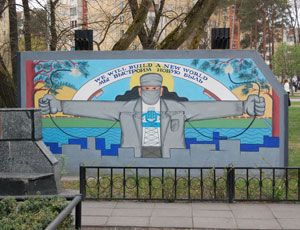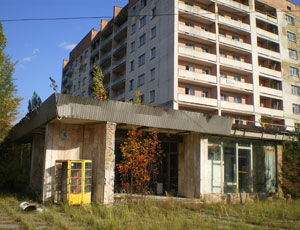Most of Chernobyl’s workforce and staff live in apartments and bungalows at Slavutich, a 40-minute train ride eastward across the exclusion zone, through a piece of Belarus and over the Dnieper River back into Ukraine.


The town of nearly 30,000 people was built in the wake of the accident to house families evacuated from the blighted terrain near the plant. Designed on Soviet lines, Slavutich has a vast empty main square and an eerily underused beltway wide enough for six lanes.
Till credit became available to Ukrainians under two years ago, few locals could afford cars, though they are now increasingly common, say residents. The supermarkets are also recent, augmenting the weekly produce market.
Hotels in Slavutich are modest by western standards, but consumer prices are rising, complain locals. The imminent arrival of a contingent of French professionals to work on the new shelter project is part of the reason.
Managers of the French Novarka consortium had planned a build new section of the city for their expatriates but decided against it. Instead, the consortium has taken over a wing of the town’s only hotel, the austere Evropeyskaya.
Many of Slavutivch’s residents will have been part of the evacuation of Chernobyl’s former town, Pripyat, 2-km from the plant. What was home to over 40,000 people is now sealed off and abandoned.
Pripyat is frozen in time. The Ferris wheel and amusement park cars that were being installed for a children's festival are rusting where they stand. Vegetation increasingly obscures the substantial buildings. Its lampposts still bear the hammer and sickle emblem.


Post a comment to this article
Report Abusive Comment